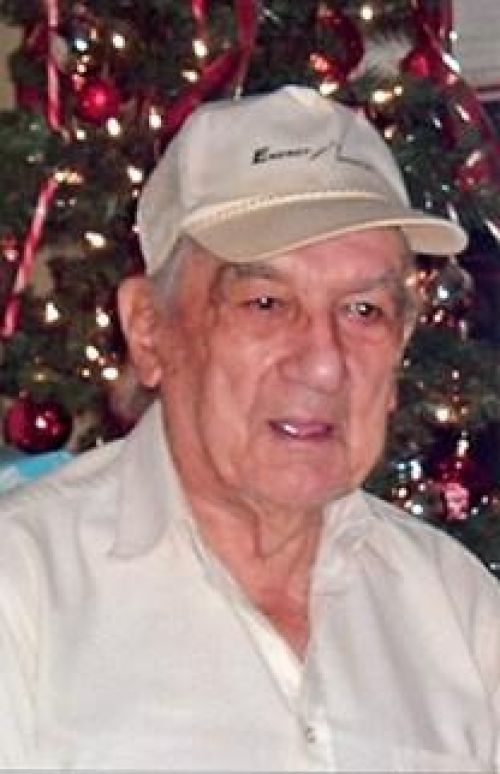
Motorsports Park regularly hosts Kart racing, too
April 3, 2013
Andrew Calise Freeman
April 8, 2013Dean Daigneault’s eyes swell when he talks about the past.
The memories are sharp. He paints a vibrant picture of the day he was reunited with his brother Herc in Manilla, two brothers in separate branches of the military who found each other amid World War II, took a case of beer to the waterfront and reunited after more than a year apart.
The moisture returns when he remembers his decision at 27 to leave his job in oil-and-gas development – at the urging of his father-in-law Paul V. Haydel, original owner Haydel’s Drugstore in Houma – to pursue a pharmacology degree at the University of Mississippi. Like many of the pursuits he recalls, that was a success.
The tear-duct dam never quite breaks, but it’s strained when he talks about finishing refurbishment of a cottage now on the Southdown Plantation Museum grounds that was erected nearly 130 years ago.
That’s because Daigneault, 86, a former two-term school board member and city of Houma alderman, was born within its walls. For three years before his family moved, he lived there, sleeping on the cypress floor as the son of a laborer who oversaw sugarcane cultivation. He returns home and remembers with emotion the voyage to get here.
“We have nothing in this community to represent, I don’t know how to express it, where we started and how we got here,” Daigneault says. “I want to (represent) the hardships that we went through to bring this community to up to where it is today.”
***
Circa 1885, the cottage now resting in Southdown’s shadow was located on Hollywood Plantation, also owned by the Minor family, says museum executive director Rachel Cherry. Hollywood ceased cultivating sugarcane in 1977, the year Southdown stopped its production.
The cabin was delivered to museum grounds 14 years ago as a donation from Ken Barrilleaux. It was used for storage until recently, when Cherry began replacing stowed goods with furnishings donated by Terrebonne residents.
Though still awaiting delivery of a potbelly stove and moss-stuffed mattress, the two-room, all-cypress cabin has a host in antique collections. A book of hymns rests on the brick fireplace’s mantle, between a rocking chair and Singer sewing machine in the family room, and a pair of towels drape over the washing table in the kitchen across from the wooden front-drain washboard proclaiming “The Board Will Do The Work.”
Cherry has already begun working the cabin into the end of museum tours, juxtaposing the decadence of the plantation house with the living quarters of the laborers who provided it.
“This is what it would have been,” she says. “No electricity, no running water. … Everything in here is of-era, but then you’ve got to remember, it’s from like 1890 through 1935, when people were still living in these conditions. Even though we had electricity, they didn’t.
“The whole point is to show these are the people who made the money for the people who lived in the big plantation houses. … All of this amazing stuff is because these people lived like this.”
Beneath roaming footsteps, the cypress floor doesn’t creak so much as it cracks. White wooden shutters hinge from pane-free windows, the only regulators of cold and heat, light and dark.
In the family room a bedframe dominates the layout, jutting out diagonally from a corner and consuming much of the space. A dining table in the kitchen is smaller than many office desks. The toilet is outside.
Daigneault likes to talk about the No. 3 tub in which he bathed. “You’d sit down in a chair, put your feet in the water, soap yourself up real good, and they’d pour water on you, you see?”
Cherry continues to accept era-appropriate household fixtures, and Daigneault says he plans to commemorate all of the donors with placards within the house.
“We’ll take anything you can find, if you can help us,” he says.
Daigneault becomes emotional when speaking of Cherry and Barrilleaux, without whom he says the renovations under way wouldn’t be possible.
“If it wasn’t for them, I wouldn’t be doing what I’m doing today.”
***
Wistfulness isn’t the only emotion Daigneault exhibits.
He’s still furious that his father’s supervisor on a Presquille plantation told pops to choose between Herc and his job after the family wanted to find treatment for Herc’s rash of carbuncles.
But Daigneault is proud of the way his mother cursed the supervisor three weeks later as he hopped into his black car and the Daigneault family prepped to move to Morgan Street for work on another plantation. “He couldn’t get the car started, he didn’t know what to do.”
He’s in awe of the New Orleans Charity Hospital intern who volunteered to treat his mother’s double pneumonia when Daigneault was four. She survived, and the family moved back to Houma’s clean air after a year in the city.
Thankful that his knowledge of typing kept him off Navy vessels during World War II, resolute in his belief that school board members should only serve two terms and devoted to his wife Marie, whom he calls “Mama,” life’s impressions have carved a litany of nuanced beliefs and feelings.
“Without her, it would have been tough,” he said. “She put up with me going to school, getting away from everything, had to go into a tough line (of work) and then stayed with me right up until the end.
“We made it.”
When Daigneault says he made it, he means it. From the time his family returned to rural Louisiana when he was 4 until he graduated high school, Daigneault’s father worked on plantations. “We were like nomads. We just moved and moved and moved and moved, and that helped, to meet people,” Daigneault says.
Living conditions weren’t always as poor as they were in the early days of his life, back when he was sleeping on the cypress floor as a toddler. The cabin at Southdown harkens back to his youth, and it serves as a gateway into the past beyond him.
Even after the right to own slaves was banished, the principle of cheap labor lingered. Scrip, or credit at the plantation-owned country store, served to reduce labor costs, but the difficulty in securing legal tender complicated the process for workers to advance in class. Not all of his father’s wages were paid in scrip, as was the case in those earlier generations, but some were, he says.
“We were poor,” Daigneault says. “We weren’t even middle class. We were poor.”
After graduating high school, he enlisted in the Navy (his branch of choice versus being drafted into the Army). The typing skills he learned at Terrebonne High School kept him in a Philippines office (and off the ships), and the unquestioned highlight of his tour was the sibling reunion.
After the war, Daigneault entered into a blossoming local industry that would eventually grow to supplant sugarcane as the region’s top economic driver. He started as a roustabout in the oilfield, moving up in ranks before being summoned to New Orleans during the Korean conflict.
After his service ended (more than nine years counting his inactive service), he enrolled at the University of Mississippi to study pharmacology. Ole Miss was one of a few colleges in the South enrolling students in January, when Daigneault was discharged as a second-class petty officer, that had the programming he desired.
Upon graduation, he worked as a pharmacist for Haydel’s for a while before moving to Eckerd’s. After building his reputation within the community, he won two six-year terms on the parish school board. Later, he was elected to the pre-consolidated government Houma City Board of Aldermen and went on to serve as mayor pro-temp. After retiring as a pharmacist, Daigneault served as director of Civil Defense for the Terrebonne Parish Sheriff’s Office.
Daigneault admits he’s still active in local politics, campaigning for candidates who have shared his values, such as school-board term limits, by going house to house.
“We never stopped,” Daigneault said. “We never stopped. Once you stop, you’re finished. People don’t understand that.”
Like his roustabout roots in the oilfield, Daigneault now dabbles in various aspects of the community, lending his “common sense and experience” to problems he can rectify, but carefully selecting his tasks.
“My wife taught me this a long time ago, it’s a prayer: If you have something that there’s no way you can figure it out, leave it alone because all it’s going to do is torment you. But if you have something that you can take care of, do it to the best of your ability to make sure it comes out real, real good and you can live with it. That’s what I’m doing now.”
Dean Daigneault, 86, sits on a bench outside the first home he ever lived in, this labor cabin being refurbished on Southdown Plantation grounds.
Next to the cabin’s fireplace rests a rocking chair and on its mantle are a bevy of antique collections.
A washboard hangs from a wall in the cabin’s kitchen.
The labor cabin’s exterior at Southdown Plantation is pictured.













